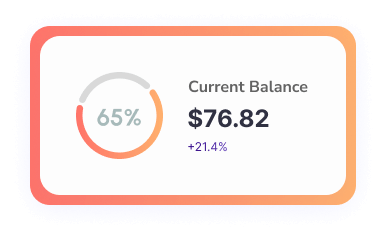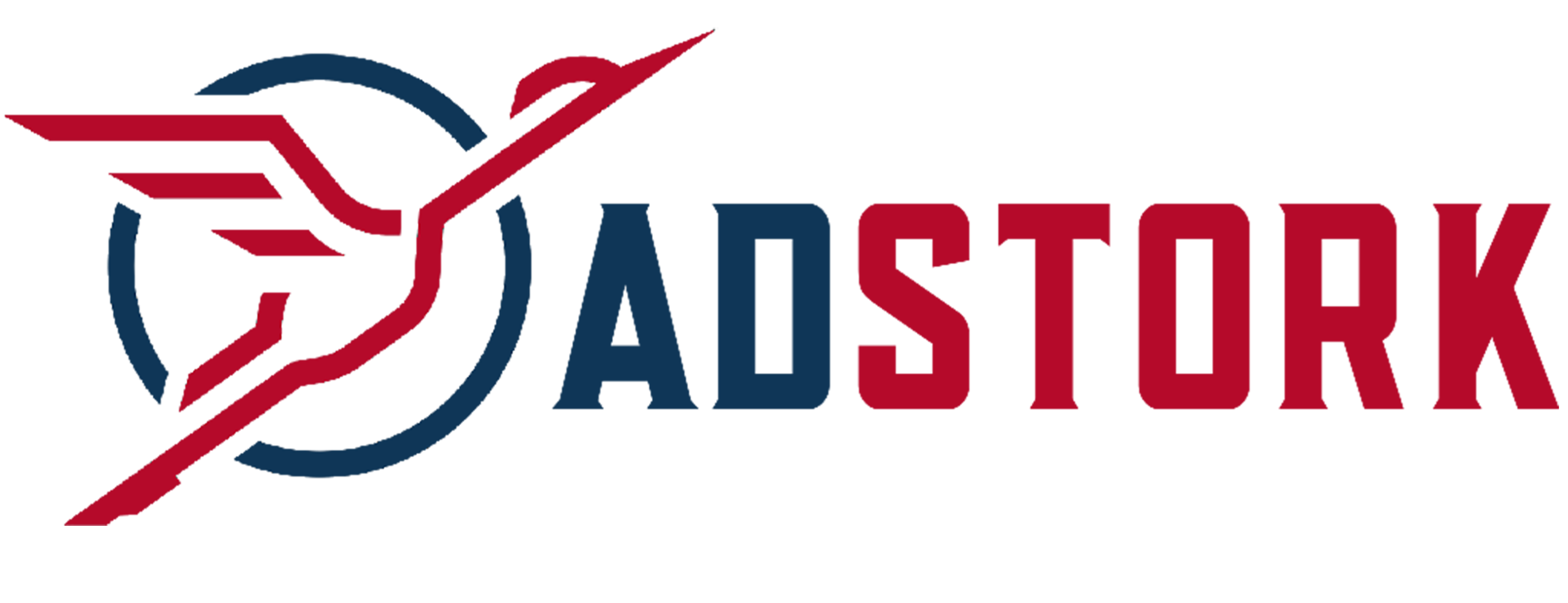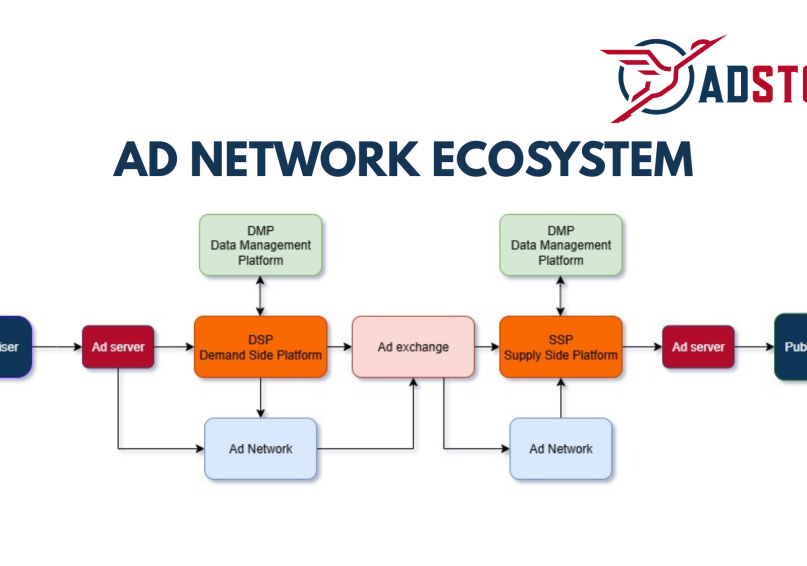The ideal advertising network for seamless RTB and XML collaborations
Adstork empowers SSPs to easily integrate and sell traffic through RTB and XML feeds, while giving DSPs access to exclusive premium inventory, advanced targeting, and real-time analytics. This seamless setup helps both sides maximize revenue and achieve scalable growth.

Empowering Long Lasting Partnership
At Adstork, we believe in empowering long-lasting partnerships that drive mutual success. Our platform is designed to foster strong relationships between SSPs and DSPs, offering seamless integration, advanced targeting, and real-time analytics. By connecting SSPs with internal campaigns and providing DSPs with access to premium inventory and internal traffic, we ensure that both sides thrive in a dynamic, programmatic ecosystem. With a commitment to transparency, innovation, and consistent support, Adstork helps build enduring partnerships that grow and evolve, delivering sustainable results for years to come.
WHY CHOOSE US
Why Choose Adstork? – The Leading Ad Network
Advanced Ad Safety and Fraud Prevention
Adstork leverages cutting-edge anti-fraud algorithms to ensure ad safety, protect brand reputation, and deliver only high-quality traffic. Your campaigns are secure with us.
Optimized Ad Performance Tools
Our platform offers innovative tools like custom audience targeting, creative templates targeting to maximize your ad's impact and drive superior results.
Comprehensive Analytics
Make data-driven decisions with Adstork’s powerful analytical tools, including traffic estimators, smart rotators, and in-depth performance reports to refine your strategies.
Global Reach with Massive Traffic Volume
With over 5 billion daily ad impressions across 195+ regions, Adstork enables your ads to reach audiences worldwide, ensuring unparalleled exposure.
Flexible Automation Options
Adstork provides automation solutions like CPA Goal and advanced auto-rules, allowing you to manage campaigns with precision, from fully manual to 100% automated.
Dedicated Partner Support
Our expert team is available 24/7 to assist with campaign optimization and traffic monetization. We provide tailored guidance to help you achieve your advertising goals effortlessly.
1
+
Billion Daily Requests
1
+
Active Advertiser Campaigns
1
+
Active Publisher Websites
1
+
Anti Bot and Bad Traffic Rules
OUR VALUES
How we run Adstork?
Results Driven
At Adstork, We run campaigns using sophisticated data analytics to target the right audience, track performance, and continuously optimize for the best ROI. Every decision is backed by data, ensuring our clients see tangible results from their investments and get good results
Innovation
We stay ahead of the curve by integrating the latest technologies and innovative strategies into our platform. From AI-driven targeting to dynamic creative optimization, Adstork leverages cutting-edge tools to create unique and impactful advertising experiences.
Collaboration
Adstork is designed to foster collaboration between advertisers and publishers. By providing a space for open communication, shared goals, and mutual support, we ensure that both parties achieve success through streamlined partnerships.
Transparency
Our platform operates with full transparency at every step. We provide clear and detailed reports, fair pricing, and open communication, ensuring all stakeholders are well-informed and confident in the value they receive from our services.
OUR SKILLS
Pay for Qualified Expertise
0
Over 7 Years of Industry Expertise
With over 7 years of experience, Adstork has built a reputation for delivering reliable and innovative ad solutions, empowering advertisers and publishers worldwide.
0
Dedicated and Experienced Account Manager
A committed account manager with 3+ years of expertise, focused on providing personalized support and optimizing client success.
0
Full Team Working Around the Clock
With a robust team of 15+ Account managers, 12+ developers, and 7+ back-office staff, Adstork operates 24/7 to ensure your goals are met efficiently. Our experts are always ready to provide the support and innovation you need for success.




FAQ
Frequently Asked Questions
What is Real-Time Bidding (RTB)?
RTB is a programmatic advertising process where advertisers bid in real-time for ad impressions. This auction-based method happens within milliseconds, allowing advertisers to target specific audiences with relevant ads.
How does RTB work?
RTB works by using automated systems that allow advertisers to bid for ad inventory on digital platforms in real-time. When a user visits a website or app, an ad exchange sends a request to multiple advertisers. These advertisers place bids based on targeting criteria like demographics, location, behavior, and more. The highest bidder wins and their ad is displayed to the user.
What are the benefits of RTB?
Efficiency: RTB automates the process of buying and selling ads, leading to better resource allocation.
Targeting: It allows for highly precise targeting based on user data, increasing the chances of conversion.
Cost-Effective: With RTB, advertisers can adjust their bids based on performance, ensuring they pay only for relevant impressions.
Targeting: It allows for highly precise targeting based on user data, increasing the chances of conversion.
Cost-Effective: With RTB, advertisers can adjust their bids based on performance, ensuring they pay only for relevant impressions.
What is an ad exchange in RTB?
An ad exchange is a digital marketplace that connects advertisers and publishers. It allows the buying and selling of ad inventory in real time. The exchange facilitates the RTB process, ensuring that ad auctions happen efficiently.
What is a demand-side platform (DSP)?
A DSP is a platform that allows advertisers to buy ad inventory through RTB. It helps advertisers manage their bidding strategies, select the best inventory, and optimize campaigns based on real-time performance.
What is the role of a supply-side platform (SSP)?
An SSP is a platform that helps publishers manage and sell their ad inventory. It connects their inventory to ad exchanges, allowing for RTB and enabling publishers to maximize revenue.
What are some challenges of RTB?
Transparency: Advertisers may not always know exactly where their ads are being placed, leading to concerns about brand safety.
Fraud: RTB is susceptible to ad fraud, where bots or other fraudulent entities participate in bidding.
Data Privacy: Handling user data for targeting can raise concerns about privacy compliance and regulations like GDPR.
Fraud: RTB is susceptible to ad fraud, where bots or other fraudulent entities participate in bidding.
Data Privacy: Handling user data for targeting can raise concerns about privacy compliance and regulations like GDPR.
What is an XML feed ?
An XML feed in Adstork refers to a structured file format that contains ad inventory, metadata, or ad content (such as images, links, and pricing information). It’s used to share ad information between the ad network and publishers, advertisers, or other partners in a standardized manner.
How does an XML feed work in an ad network?
The XML feed acts as a data exchange format where ad-related information is shared. A publisher or advertiser can integrate the feed into their system, where it gets updated regularly with new ad content, such as banners, video ads, or sponsored links. The system reads and parses the XML feed to display ads or update the inventory in real-time.
Why do ad networks use XML feeds?
XML feeds are commonly used by ad networks because they provide a standardized and flexible way to transfer large volumes of ad data efficiently. The structure of XML allows it to handle dynamic data (like ad creatives) and maintain a clear organization for both advertisers and publishers.
What data is typically included in an XML ad feed?
An XML ad feed may contain:
Ad creatives (image URLs, video URLs, etc.)
Ad campaign metadata (campaign ID, targeting, start/end dates)
Ad pricing (CPM, CPC, etc.)
Tracking information (clicks, impressions, conversions)
Ad formats and sizes (banners, video ads, native ads)
Ad creatives (image URLs, video URLs, etc.)
Ad campaign metadata (campaign ID, targeting, start/end dates)
Ad pricing (CPM, CPC, etc.)
Tracking information (clicks, impressions, conversions)
Ad formats and sizes (banners, video ads, native ads)
How do I integrate an XML feed with my ad network?
To integrate an XML feed with your ad network:
Obtain the feed URL from the ad network or your partner.
Use an XML parser or programmatic method to fetch and read the feed.
Parse the XML data to extract and display ad creatives or update ad inventory.
Set up a process to update the feed regularly to ensure you have the latest ads.
Obtain the feed URL from the ad network or your partner.
Use an XML parser or programmatic method to fetch and read the feed.
Parse the XML data to extract and display ad creatives or update ad inventory.
Set up a process to update the feed regularly to ensure you have the latest ads.
How often should the XML feed be updated?
The frequency of updates depends on the ad network’s setup, but it’s typical for XML feeds to be updated in real-time or periodically (e.g., hourly, daily). Regular updates ensure that new ads, changes in targeting, and pricing adjustments are reflected promptly.
What are the technical requirements for an XML feed connection?
Access to the feed: The ad network should provide an accessible feed URL.
Parsing capabilities: Your system must be able to parse XML data using XML parsers (e.g., DOM, SAX).
Data handling: Your system should be able to interpret and apply ad targeting and tracking data correctly.
Authentication (if needed): If the XML feed requires authentication, make sure to handle API keys, tokens, or other authentication methods.
Parsing capabilities: Your system must be able to parse XML data using XML parsers (e.g., DOM, SAX).
Data handling: Your system should be able to interpret and apply ad targeting and tracking data correctly.
Authentication (if needed): If the XML feed requires authentication, make sure to handle API keys, tokens, or other authentication methods.
What is the difference between a static and dynamic XML feed?
Static XML Feed: The content of the feed is fixed and doesn't change frequently. It might contain pre-defined ad creatives and metadata.
Dynamic XML Feed: The content of the feed is generated dynamically based on real-time events like new ad campaigns, changing targeting criteria, or updated pricing.
Dynamic XML Feed: The content of the feed is generated dynamically based on real-time events like new ad campaigns, changing targeting criteria, or updated pricing.
Can I use XML feeds to manage multiple ad formats?
Yes, XML feeds can be structured to support multiple ad formats. For example, a feed might include different sections or tags for display ads, video ads, native ads, or even mobile-specific formats. It allows ad networks and publishers to manage various ad formats through a single, unified feed.
How can I troubleshoot XML feed issues in an ad network?
If you encounter issues with an XML feed:
Check the feed URL: Ensure the feed URL is accessible and correctly configured.
Validate the XML: Ensure the XML is well-formed and meets the schema required by the ad network.
Check for missing data: Ensure all required fields (e.g., ad creatives, pricing, targeting) are populated.
Look for errors: Check for error codes or error messages in the feed and make sure the system is handling them appropriately.
Check the feed URL: Ensure the feed URL is accessible and correctly configured.
Validate the XML: Ensure the XML is well-formed and meets the schema required by the ad network.
Check for missing data: Ensure all required fields (e.g., ad creatives, pricing, targeting) are populated.
Look for errors: Check for error codes or error messages in the feed and make sure the system is handling them appropriately.
Is XML feed integration secure?
XML feed integrations can be secure if proper measures are taken:
Use HTTPS for secure data transfer.
Implement authentication protocols like API keys or OAuth to restrict unauthorized access.
Regularly validate and monitor the integrity of the feed content to prevent data tampering or fraud.
Use HTTPS for secure data transfer.
Implement authentication protocols like API keys or OAuth to restrict unauthorized access.
Regularly validate and monitor the integrity of the feed content to prevent data tampering or fraud.
Can I customize the XML feed structure for my ad network?
While XML is a flexible format, most ad networks will provide a predefined feed structure to ensure consistency. However, depending on the ad network, you might be able to customize certain elements of the feed to meet your specific needs, such as adding custom attributes or targeting criteria.
What is the role of an XML Schema in feed integration?
An XML Schema defines the structure and rules of the XML document. It specifies the required tags, attributes, and data types in the feed, ensuring that the feed follows a standardized format and preventing errors during integration.
What are some common challenges with XML feed connections in ad networks?
Data Integrity: Ensuring that the data in the feed is accurate, up-to-date, and error-free.
Latency: Handling the delay between receiving updated feed data and serving the ads.
Complexity in Parsing: Parsing large or complex XML feeds can be resource-intensive and may require optimization for performance.
Compatibility Issues: Integrating XML feeds across multiple systems or platforms may lead to compatibility issues, especially if the schema or format changes.
Latency: Handling the delay between receiving updated feed data and serving the ads.
Complexity in Parsing: Parsing large or complex XML feeds can be resource-intensive and may require optimization for performance.
Compatibility Issues: Integrating XML feeds across multiple systems or platforms may lead to compatibility issues, especially if the schema or format changes.
How can XML feeds improve the efficiency of ad network operations?
XML feeds automate the process of data exchange between ad networks, publishers, and advertisers. This reduces the need for manual updates and ensures that the latest ad creatives, pricing, and targeting rules are consistently applied across platforms, improving operational efficiency.
Get Latest Update from Advertising Industry








